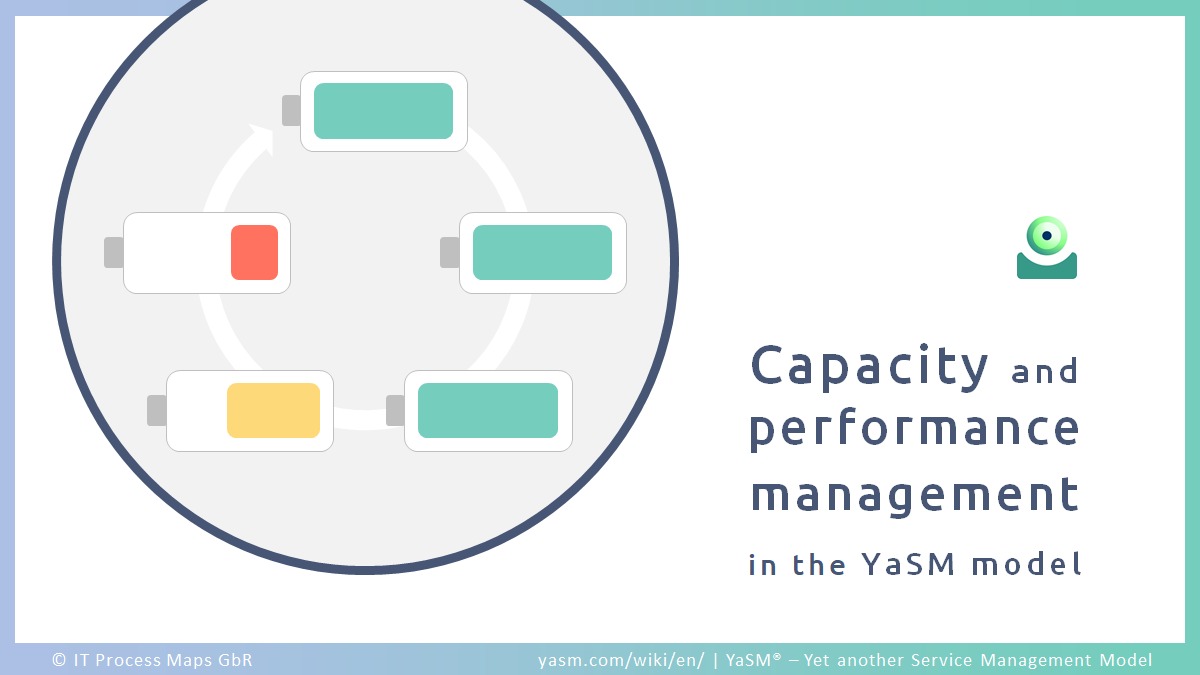Capacity Management
Nobody would dispute that service capacity and performance must be managed. But does that mean we need a capacity management process?
Capacity management in the ITSM frameworks
Capacity management is a key topic in all service management frameworks and standards. For example,
- ITIL 4 includes the practice of capacity and performance management
- ITIL v3 defines capacity management as a service lifecycle process
- SIAM refers to capacity management as one of the processes within a SIAM ecosystem
- In VeriSM, capacity management is a key element in the VeriSM high-level stages for services
- ISO 20000 specifies requirements for the management of service capacity and performance.
As per ITIL® 4, capacity management aims to "ensure that services achieve agreed and expected performance, satisfying current and future demand in a cost-effective way". It is essentially about
- forecasting what capacity is needed to provide a service
- determining how the required resources can be provided in an economical way
- monitoring and adjusting service capacity on an ongoing basis.
Capacity management - a difficult process?
So it is widely accepted that the management of service capacity is critical for any service provider, but still many organizations find it difficult to implement capacity management in practice.
The problem seems to be the way it is presented: Capacity management is usually described as a distinct process, practice or capability, using its own set of plans and reports. It has numerous interfaces with other processes because it needs to spring into action whenever service capacity or performance issues need to be dealt with.
This kind of complex interfacing makes it hard to understand how all the processes are supposed to work together, which in turn makes it difficult to implement a working set of processes in practice.
Capacity and performance management in YaSM
To get around these problems in YaSM, we decided that capacity management does not need to be a service management process of its own. Instead, YaSM takes the view that service capacity and performance are aspects to be considered at every stage of the service lifecycle - for instance when defining services, during service operation, and when continuously improving services.
- There are thus, for instance, activities in the strategic and service design processes to forecast the expected demand for new services, and to define the required capacity and performance levels.
- Service capacity and performance are continually monitored as part of service operation, and
- if any capacity issues are detected, corrective action will be taken - either in the form of pre-defined routine operational activities or service improvement initiatives.
As a result, it is very clear in YaSM how service capacity and performance can be managed by embedding appropriate activities in the service lifecycle processes. Implementing a capacity management capability in practice is thus quite straightforward.
On a side note, the YaSM way of managing service capacity is quite in line with the latest service management guidelines. ITIL v4, for instance, describes capacity management as a practice and lists the key activities, but does not say there must be a capacity management process. Rather, ITIL 4 encourages service providers to define tailor-made processes that work for the organization.
Notes
Virtually all other service management guidelines and standards include capacity management:
- CMMI-SVC® contains a process area called 'Capacity and Availability Management (CAM)',
- USMBOK™ refers to 'Service Capacity Management' as a knowledge area,
- and in the COBIT® 5 process reference model we find 'Manage Availability and Capacity' as part of the 'Build, Acquire and Implement (BAI)' processes.
Related pages
- YaSM service management processes
- Comparison: ITIL 4 practices and YaSM processes
- YaSM and ISO 20000
References
[AXELOS, 2019]. -- AXELOS: ITIL® Foundation, ITIL 4 Edition. - The Stationery Office; Norwich, UK, February 2019.
By: Stefan Kempter ![]() , IT Process Maps.
, IT Process Maps.
Capacity Mgmt. in the ITSM frameworks › A difficult process? › YaSM capacity and performance management





